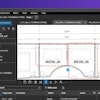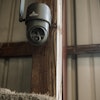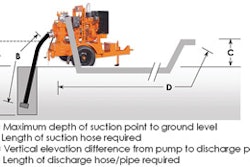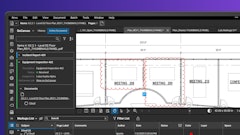When asked why you should be chosen over a competitor, do you respond with "because we do things right?" In other words, is quality your calling card?
I'm betting that you spend a lot of time making sure your crews build things as you want them built. You probably check on your crews frequently, or work on the crew personally, just to avoid poor workmanship.
Personally checking on work is the most common approach used by small contractors - unfortunately it's not the most profitable approach. Every hour you devote to checking quality is an hour not spent building and running your business.
How about considering a different approach, one that is more in tune with systematizing your business? You need a system that will produce quality work as if you were on the crew, even though you never are. A quality control system can be kept pretty simple if you adhere to a few proven tricks.
- Appoint a lead man and hold him accountable for quality control.
- Create user-friendly quality standards.
- Review quality standards frequently with your crews.
- Require pictures to be turned in.
Appoint a lead man, pay him a little extra, and make it his responsibility to ensure the proper workmanship is provided to your customer. You can't afford to be your company's one and only quality control inspector. Assign that task to your crew leader.
He should be responsible for safety, production, paperwork and quality. If you haven't put that in place yet, you need to. You will never be free to grow your company if you fail to put effective crew leaders in place.
One tool you MUST create is a user-friendly quality standard. Your quality standard needs to be friendly to your field personnel. Pictures and checklists are the best.
WARNING! Do not write long-winded operating procedures. Nobody likes them, including you, me and your crew leaders.
Use check lists to explain procedures. They should be kept brief and easy to read and follow.
Use pictures, tons of pictures, to guide your crews' efforts. Always write notes on your pictures to point out important details.
Make sure your crews can tell the difference between when they need to redo the work and when they don't.
For that reason, provide pictures of "barely acceptable and passable" quality.
But don't stop there. Show your crews how you would like the work to be done. Provide pictures of "preferred and desired" quality.
You should print your pictures in color to best bring attention to important details. Buy yourself a color laser printer. Pictures printed from inkjet printers blur when they get wet. Laser prints are water resistant and better withstand field use.
Place the pictures and check lists into three ring binders. Slip the pages into water-proof protectors. Consider laminating the photos so that they are virtually weather proof.
Each crew leader should keep a Quality Standard in his truck. Standards are worthless unless readily available to your crews.
Quality standards should be reviewed with the crews. It's best to hold a meeting weekly to review quality standards, safety standards and upcoming schedule. When a new member is added to the crew, use that opportunity once again to reinforce your quality standards.
To complete the quality control process, require your crew leaders to take pictures of the work and turn them in with their timesheets. Clearly communicate the pictures you expect to be taken. Let the camera be your eyes.
To keep everyone on the up and up, you will need to perform periodic, random spot checks. Don't let your crews know which jobs you are going to inspect until after you inspected them.
I have one final piece of advice regarding quality control. When the same quality problem keeps popping up, bring your crews in for a brainstorming session.
They will have a boat load of suggestions for fixing the problem. Several will be unacceptable, but a few will be viable and worth consideration.
Remember, to err is human; to forgive is divine - but the bottom line is that doing it right the first time is far cheaper than doing it twice. Make sure your crews know that is your attitude.



















